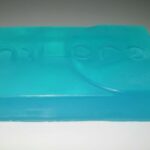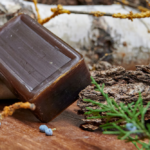The main types of natural stone used as floor coverings are limestone, granite, slate, travertine, and marble. The latter is appreciated by all those who wish to bring a touch of authenticity and elegance to the interior of their home. Marble has many qualities, but it is expensive. Also, its maintenance requires special treatment to preserve its aesthetic appearance. Here’s everything you need to know about marble tiles.
- Marble: a material inseparable from luxury
- The different types of marble
- Marble tiles: where to put?
- Marble tiles: advantages and disadvantages
- Disadvantages
- Maintaining a marble tile
Marble: a material inseparable from luxury
Metamorphic rock, marble is composed of crystallized grains of dolomite and calcite. Pressure and heat have transformed its texture over the centuries. The integration of the crystals in its mass is at the origin of the formation of marbling and veins which make the peculiarity of this stone which is synonymous with luxury.
The nobility of marble has been recognized since ancient times. Its extraordinary aesthetics and its smooth appearance with incomparable brilliance have seduced architects who have chosen this material to decorate the palaces of yesteryear. Marble can be found in stately homes, either in tiles, frescoes or ornaments of all kinds. Nowadays, marble is the preferred material for floor and wall coverings in luxury hotels.
The different types of marble
Marble is presented in a multitude of varieties whose colours differ depending on their origin. These include, among others:
Carrara marble (Italy): the best known, it is distinguished by its shade of pure white veined with black.
French marble: red in colour, it is extracted from quarries in the Pyrenees.
Turkish marble: it is distinguished by its blue color.
Marble from Egypt, Spain, Tunisia, Portugal…
The marble is available in black, brown, pink, grey, red, grey/blue, black with white veins and several shades of green.
Marble tiles: where to put?
Marble tiles are mainly suitable for floor and wall coverings. It can also be used to create decorative elements on a shelf, washbasin or above a piece of furniture.
Marble tiles: advantages and disadvantages
Advantages
Marble is a solid and durable material.
With a glossy or aged finish, it is easy to polish.
Over time, it can develop a patina and bring out its shiny, smooth appearance even more.
Disadvantages
Due to its sensitivity to shocks and water, marble remains a fragile material. It, therefore, requires special care to preserve its aesthetic appearance and durability.
- Porous, this material requires a water-repellent and stain-resistant treatment. This operation must be renewed every year.
- The application of a sealer is recommended in order to protect the marble against water infiltration that can lead to cracks.
- Difficult maintenance is one of the weak points of marble tiles.
- Marble is a heavy material. This option is therefore often not recommended for rooms located upstairs, unless it has been checked beforehand that the support is suitable for the weight of the floor covering.
- Its high cost is also a disadvantage of marble. Its price varies between 40 and 200€/m².
Maintaining a marble tile
Marble is a material sensitive to water and stains. In addition to the specific treatments indicated above, it requires particular maintenance.
For cleaning, it is strongly recommended to use a neutral detergent. Marble loses its colours and whitens on contact with detergents that are too corrosive or contain acid. Unlike other types of coatings, it does not support vinegar, lemon, chemicals, such as bleach.
The daily maintenance of a marble tile floor is carried out using a microfibre broom or a sponge soaked in water, with a little black soap or household soap added. To restore its shine, apply a small amount of linseed oil or glycerine to its surface.
To remove a stain on this type of coating, rub it lightly with cotton wool soaked in bleach or lemon juice. Then apply colourless wax to the treated area and polish with a woollen cloth. A mixture of baking soda (1/3) and pumice powder (2/3) is also useful in removing a stain from marble tiles.
When the marble tile is filthy, use this solution: mix a cup of soda crystals with a litre of hot water.
Just follow the care instructions given above to preserve the original appearance of a marble tile and even embellish it over time.
Thanks to this article, you are now informed about marble tiles to guide your decision on this flooring that will bring a touch of nobility and authenticity to your home.
If you want to see more useful information about different categories, please visit our website.











